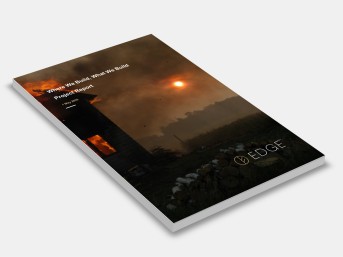Where We Build, What We Build: Project Report
South Australian Government
Where We Build What We Build will support the goals of the region by enabling assessment of the climate risk exposure of homes and encouraging better climate risk mitigation decisions. To achieve this, it will combine:
• Where We Build – flood, heat and fire hazard mapping, comparing the data used by the insurance industry and the data available to Councils; and
• What We Build – risk exposure categorisation of region-specific housing archetypes.
Where We Build What We Build provides a framework and knowledge portal that can be used by developers and homeowners, that can be shared with Councils across the State, and that will support action on other climate risk management priorities.
The project is an initiative of Resilient Hills & Coasts (RH&C), in partnership with the Insurance Council of Australia (ICA) and National Disaster Resilience Program. It is being delivered by Seed Consulting Services and Edge Environment. The project scope covers focus areas within Adelaide Hills Council, Alexandrina Council, District Council of Mount Barker, City of Victor Harbor, and District Council of Yankalilla.
Contents:
1: Introduction
2: Climate Hazard Mapping
3: Housing Typology Study
4: Resilience Mapping
5: Development Of Climate-Ready Home Specification
6: Economic Analysis
7: Insurance Considerations
8: Development Of A Knowledge Portal And Regional Communications
9: Key Findings
Appendix A: Housing Archetype Descriptions
Appendix B: Thermal Resilient Of Building Materials
Appendix C: Climate-ready Home Specifications For New Buildings
Appendix D: Climate-ready Specifications For Retrofitting
Appendix E: Economic Modelling Inputs And Assumptions
